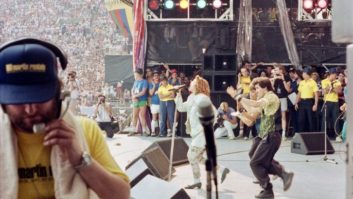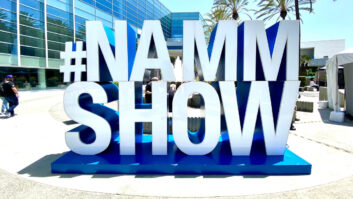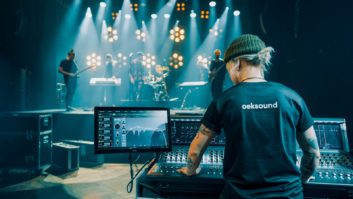
There had never been anything quite like it—sure, there’d been George Harrison’s Concert for Bangladesh and the No Nukes shows of 1979, but this was something else entirely. It was the biggest charity concert of all-time, Live Aid, held July 13, 1985.
Two massive all-star concerts featuring more than 60 acts were held simultaneously in London and Philadelphia, linked by satellite. The idea was audacious for its time—a true technological and logistical feat of the era. Broadcast around the world, more than 2 billion people watched the shows on 85 percent of all TV sets on the planet. The result was that $100 million was raised for famine relief in Ethiopia—the distribution of which is still disputed in some corners even today.
Putting aside the noble charity aspects, the technological achievements, and the backbreaking work that must have been endured by recording and live sound crews on both sides of the Atlantic, what is remembered most today is that it was a great show.
For my money, the UK concert was the better of the two; Queen simply demolished everything in its path, putting in the best performance of the day, and U2’s appearance transformed the band from earnest up-and-comers to bona-fide superstars in a mere 18 minutes. On the US side, though, there was the Beach Boys’ reunion with Brian Wilson and a train wreck Led Zeppelin reunion that was still cool for the fact that it even happened.
Both shows had their share of legends; the UK sported McCartney, Bowie and The Who, while the US had Elton, Clapton, Mick and Keith–performing separately, of course–and Dylan. They also each had their duds as well–Adam Ant’s UK performance of his soon-to-flop single “Vive Le Rock” was about as welcome as the Thompson Twins and Madonna covering “Revolution” in the US.
While you can find most of these performances on YouTube, to see them in bits and pieces is to miss the scope and excitement of the day; next to hopping in a time machine and scalping tickets, the best way to enjoy the concert is to shell out a few bucks for the great DVD box set released in late 2004 (proceeds of which still go to charity). We’ve all watched bands on DVD and experienced that slight alienation comes from watching a crowd get into a show that you didn’t attend, but it’s impossible to watch the Live Aid set without a big, dumb smile on your face.
In the years since, other charity shows like Live 8 and Live Earth have tried to, if not one-up, at least live up to Live Aid, but none of them have quite hit that cultural zenith that the 1985 event achieved. Now, with the splintering of musical tastes into ever-shrinking niches, it’s questionable if a concert of that magnitude—and with that level of far-reaching effect—could ever happen again.
Some people say that Live Aid was a passing of the torch from artists of the Classic Rock era to the New Wavers of the ’80s. Others portray it as the moment that hedonistic early ‘80s popstars finally gained a conscience. Speaking on CNN, however, original MTV VJ Mark Goodman, put it perfectly: “At the end of the day … it was everything the ’60s wanted itself to be, and maybe wasn’t, really. And here, in the greed-is-good ’80s, look at what happened.”
What are your thoughts on Live Aid? Where were you that day? What were the best and worst performances? Share your thoughts below!







